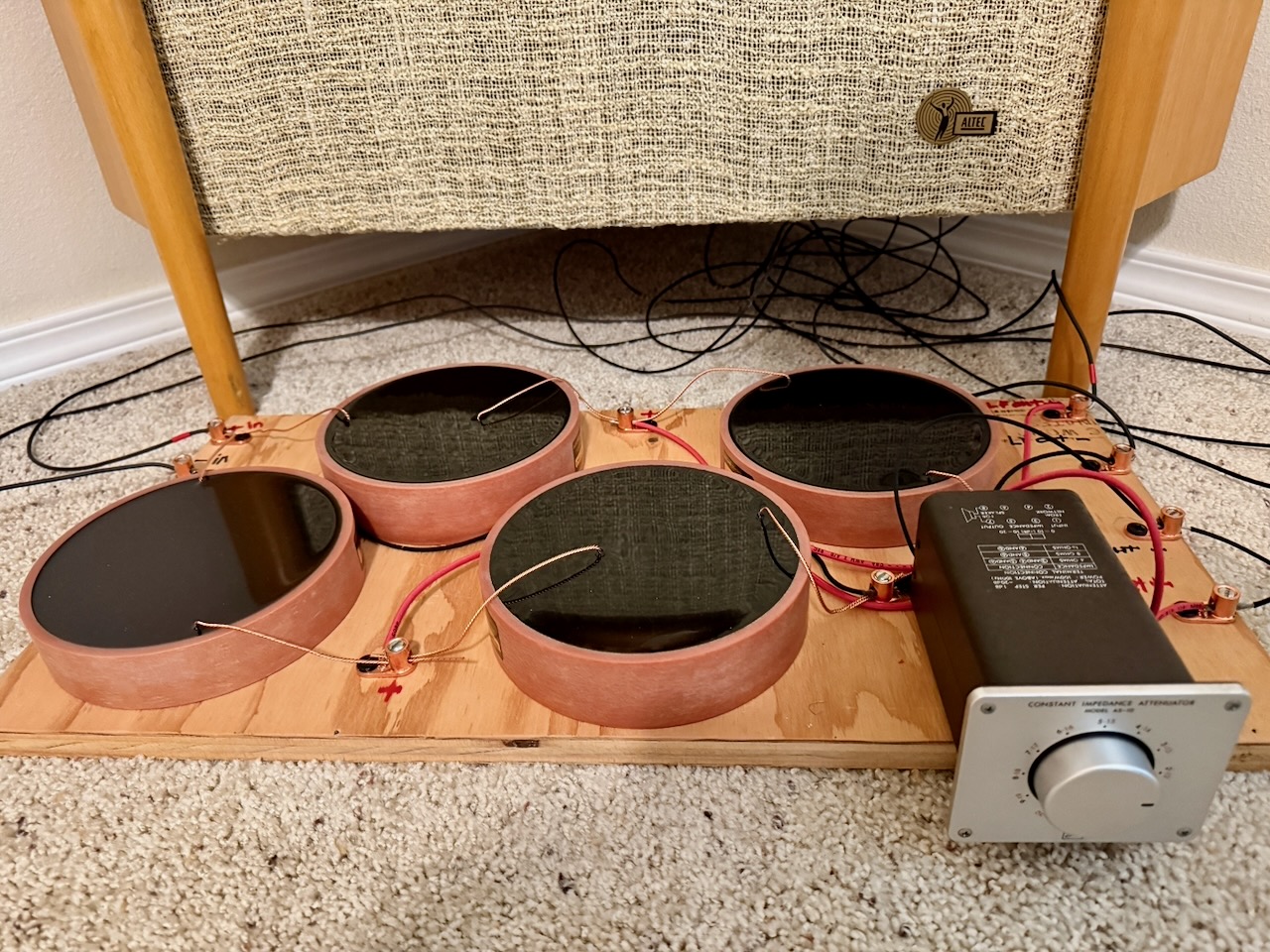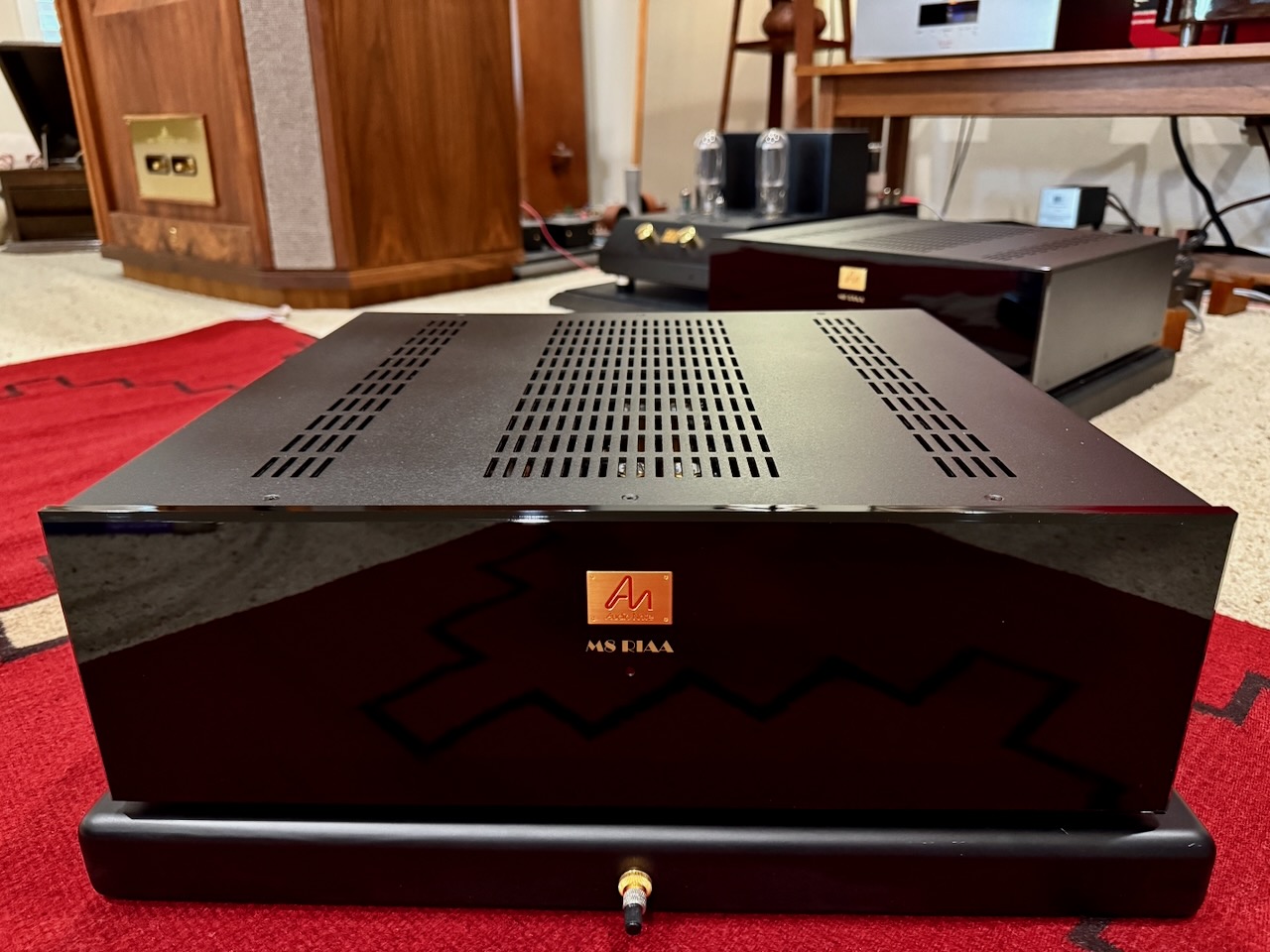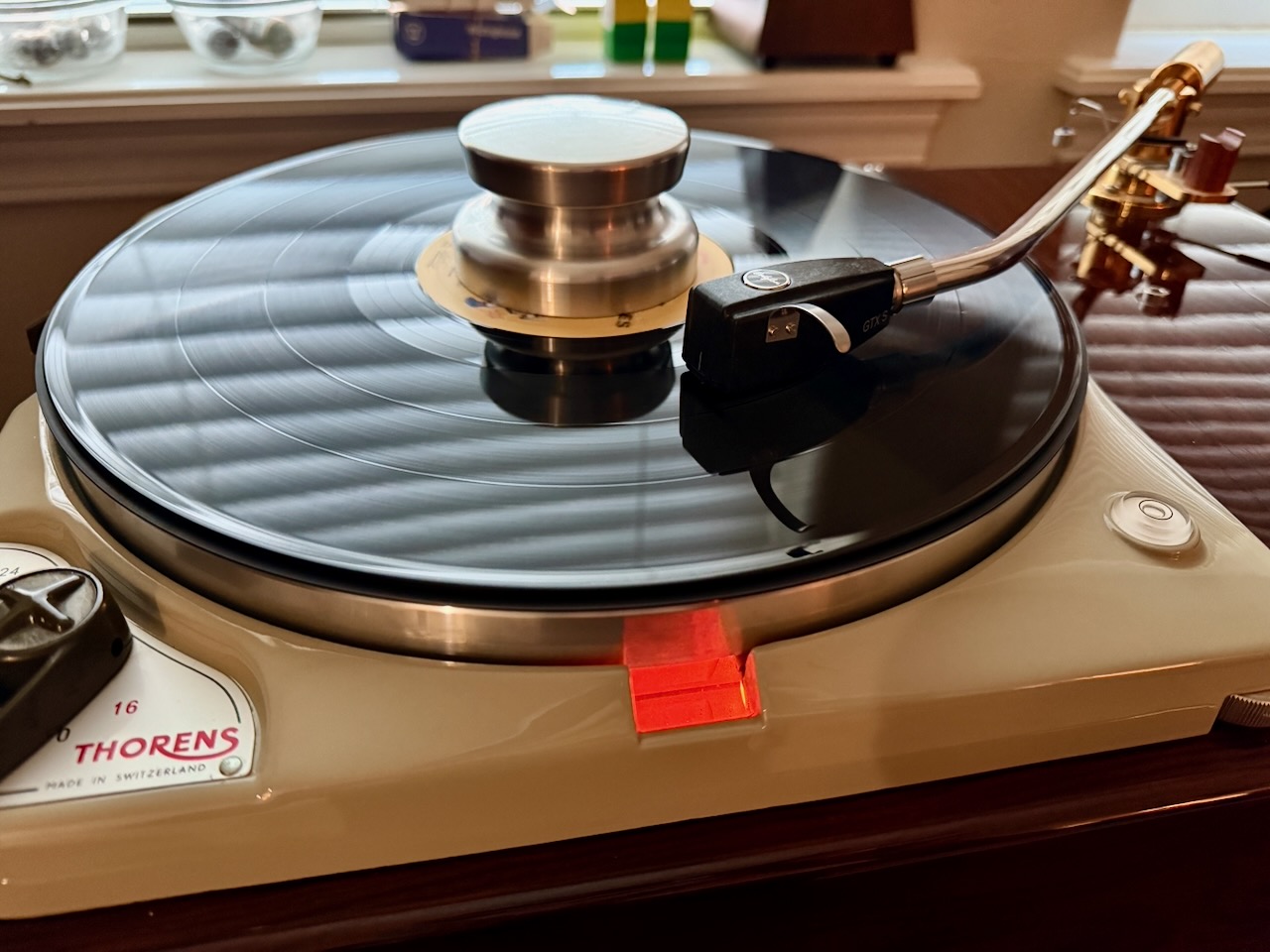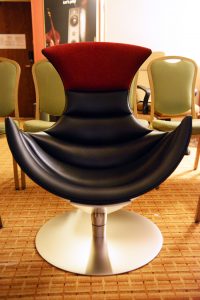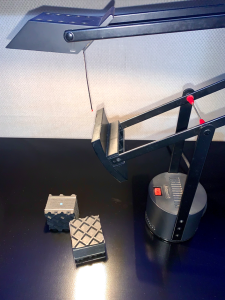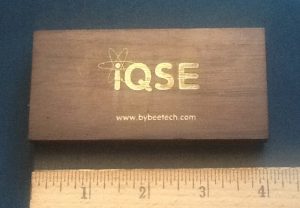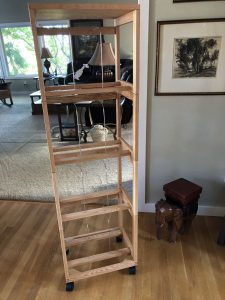RCI-3HK Cable Lifts / Insulators ($168 USD each)
I reviewed the original version of the Acoustic Revive RCI-3HK - the RCI-3 - back in Positive Feedback Issue 49 in 2010.
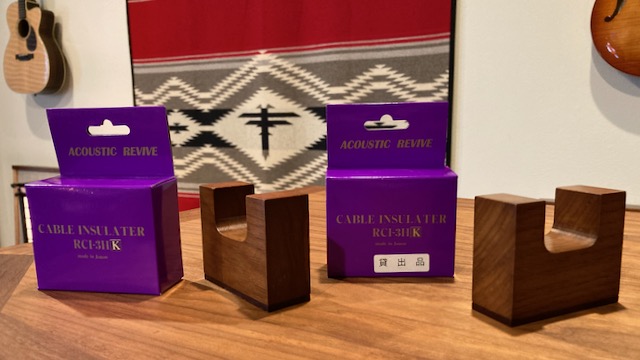
I still use those original RCI-3s in my primary music system today, but not in the same way as I did during that review. More about that in a moment.
The purpose of the RCI-3HK cable insulators is not to isolate speaker cables from the floor, but to reduce the transmission of loudspeaker vibration to the cables. Acoustic Revive says vibration from the loudspeakers degrades the performance of the cables, so by reducing vibration the cables performance is improved.
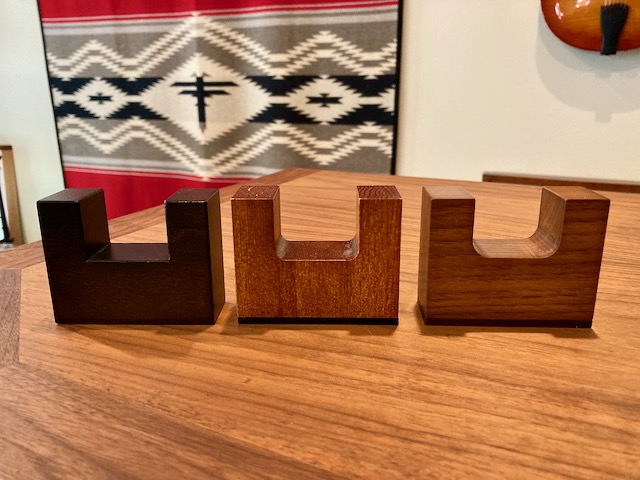
Here's the description of the original RCI-3 (left above) from the Acoustic Revive website:
"The purpose of a cable insulator is to prevent cables from being influenced by vibrations from the speaker. Most conventional cable insulators (or stabilizers) are made from a single material. So even if the cable is lifted from the floor, they will generate their own resonance which will inevitably induce coloration."
"We at Acoustic Revive have tested many materials, and as a result of these tests we decided to adopt a combination of top quality maple and ebony, which makes the sound natural and free from coloration. The cable contact surface is covered with special vibration control material for superb resonance control."
"In addition, inside the insulator is a blend of natural ores which absorb electromagnetic waves and radiated noise from the cable. Because of its combination of resonance control and noise absorption abilities, the RCI-3 will dramatically improve sound in a manner never before achieved. Noise is dramatically reduced and sound stage and imaging are more focused and three dimensional. The tone will become smoother as well."
Since 2010 the RCI-3 was updated to the RCI-3H version (middle below), and now to the latest RCI-3HK version (right below). Updates have included changes to the types of tone woods used, the cable contact surface vibration material, the mix of the vibration reducing minerals inside them, and the way they are constructed.
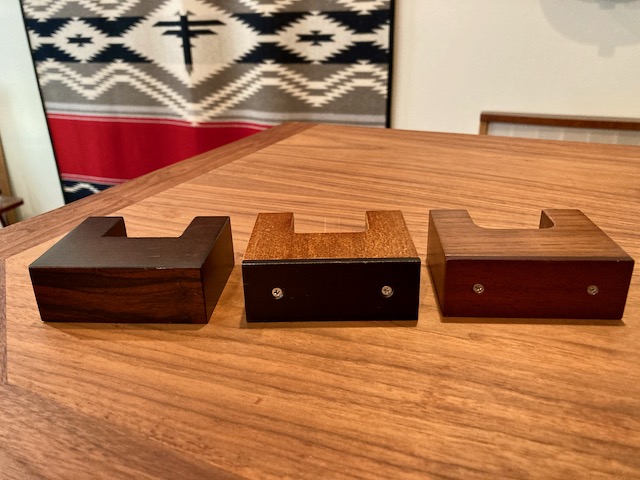
The tone woods used in the original RCI-3 were a combination of maple and ebony, and in the new RCI-3HK the tone woods are a combination of hickory and mahogany.
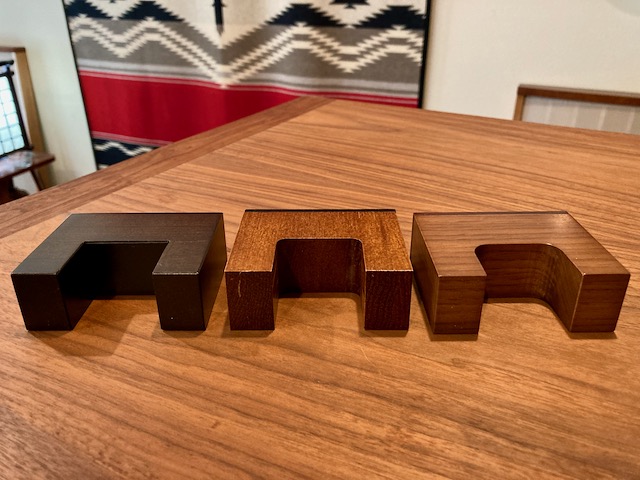
The original RCI-3 used a vibration control pad in the inner "U" part of the isolator that the speaker cables rested upon. The vibration control pad also covered a hole in the base of the RCI-3, through which the vibration reducing minerals were added.
In the RCI-3HK (and previous RCI-3H) the design was changed. Instead of adding the vibration reducing materials through a hole in top of the "U", the inside of the "U" is now solid wood, and there is no vibration reducing pad for the cables to rest upon.
Acoustic Revive now adds the vibration reducing minerals through the bottom of the base, then a wood plate is secured to the bottom of the RCI-3HK (and RCI-3H) with screws after the vibration reducing materials are inserted.

The vibration reducing minerals enclosed inside the RCI-3HK have also changed. Now they are a a blend of piezoelectric minerals—tourmaline and "Guiyang stone" (hydrozincite)—that are held inside the base. If you shake an RCI-3HK you can hear the materials enclosed in the base, just like you would with salt in a saltshaker.
When I first heard about cable lifts, it was in the context of insulating cables from static electricity that can build up in carpet, and from vibrations emanating from the floor, both of which were said to reduce cable performance.
Until the arrival of the RCI-3s, I was never keen on cable lifts, as I never heard the ones I tried make an audible difference in my HiFi rig.
With my Westminster loudspeakers playing music I could definitely feel vibration on the cabinet backs. When I placed my hand on the binding posts for the speaker cables, sure enough, I could feel vibration there too. When I grabbed hold of the speaker cables themselves, I could definitely feel them vibrating (albeit diminishing as I moved my hand further down the cables). I found the amount of vibration transmitted from the speaker to the speaker cables to be quite a lot larger than I would have expected, and something that I had never noticed before. Try that little test with your loudspeakers and see how much vibration you can feel.
With the RCI-3 lifts/insulators I could hear a readily audible improvement with them supporting the speaker cables attached to my Westminster Royal SE loudspeakers, so I became a believer.
A lot has changed with my Westminster Royal SE loudspeakers s since then, as they now have external Duelund CAST crossovers instead of the stock internal crossovers.
I built the Duelund CAST crossovers upon vibration reducing platforms—inspired by the Acoustic Revive isolation platforms—that decouple them from the floor surface, and presumably to some extent from the Western Electric tinned-copper wires that attach the crossovers directly to the Westminsters' drivers.
With this new Duelund CAST crossover arrangement speaker cables attach directly to the outboard crossovers, which are decoupled from the Westminsters, so the context has changed.
In my new crossover context, I could no longer hear any benefit from placing the RCI-3/H/HK isolators under the speaker cables.
However, if you did the above loudspeaker test I described above with your own loudspeakers, and you can feel vibration in the cabinets, binding posts, and loudspeaker cables when music is playing, it is likely you too will hear an improvement in sound quality with a pair of RCI-3HKs under your cables.
While the primary intent of the HCI-3HKs are to reduce vibration energy transferred from the loudspeakers to speaker cables, I think the same principle applies to other cables in an audio system as well, like interconnects and power cords, for example.
Depending on the review, I'll support power cables with the HCI-3/H/HKs, as well as interconnects.
The vibration pathway from the 60Hz cycling of AC in the power grid goes through the AC mains connections directly into each cable, and into each component that a cable is plugged into, degrading their performance.
Reducing vibration throughout a system improves performance—it's easily audible.
Personally, I like to start at the AC outlets to reduce vibration, as reducing vibration at the outlets means there is less vibration being transferred through power cables to your components.
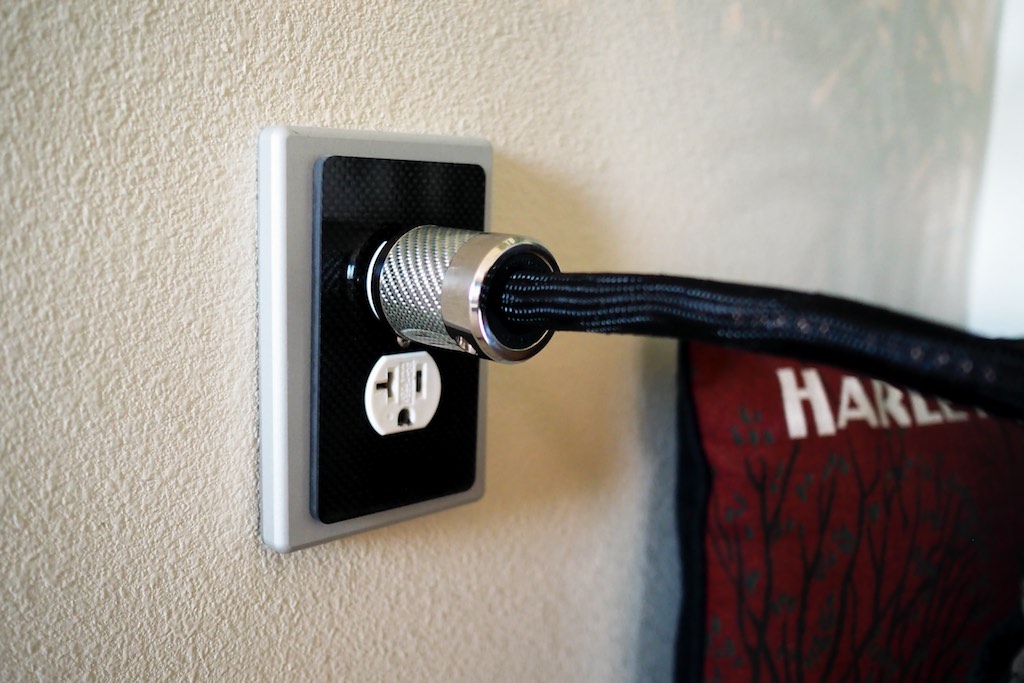
I've been using Acoustic Revive CB-1DB receptacle base plates, CFRP-1F carbon fiber outlet plates, Acoustic Revive modified Oyaide R-1 receptacles, and CS-F2 outlet stabilizers to reduce vibration at my AC outlets, before it can get to the cables, which I find to work well, and I recommend that approach to you.
Hot-rodding the AC outlets turns out to be a fairly big deal, with easily audible improvements.
Also, my power cables all connect to an Acoustic Revive RPT-6 Absolute NCF Power Distributor, which in turn connects to the AC wall outlet with an Acoustic Revive Absolute power cord. The RPT-6 rests upon an Acoustic Revive TB-38 vibration isolation platform to further reduce vibration.
My turntable is supported by vibration reducing footers. The AN-S4 SUT is placed upon an isolation platform to reduce vibration. The amplifier and phono stage are placed upon vibrations isolation platforms to reduce vibration.
You get the idea, reducing vibration throughout your audio system can make a nice difference in performance, and you can add in vibration reducing accessories over time, or all at once.
Check your loudspeakers with the vibration test I mentioned above. If they test "positive" for vibration, then try a pair of Acoustic Revive RCI-3HKs supporting your loudspeaker cables. Try them on your power cables and interconnects too. Recommended.
Please click on the link below to go to the next page.




